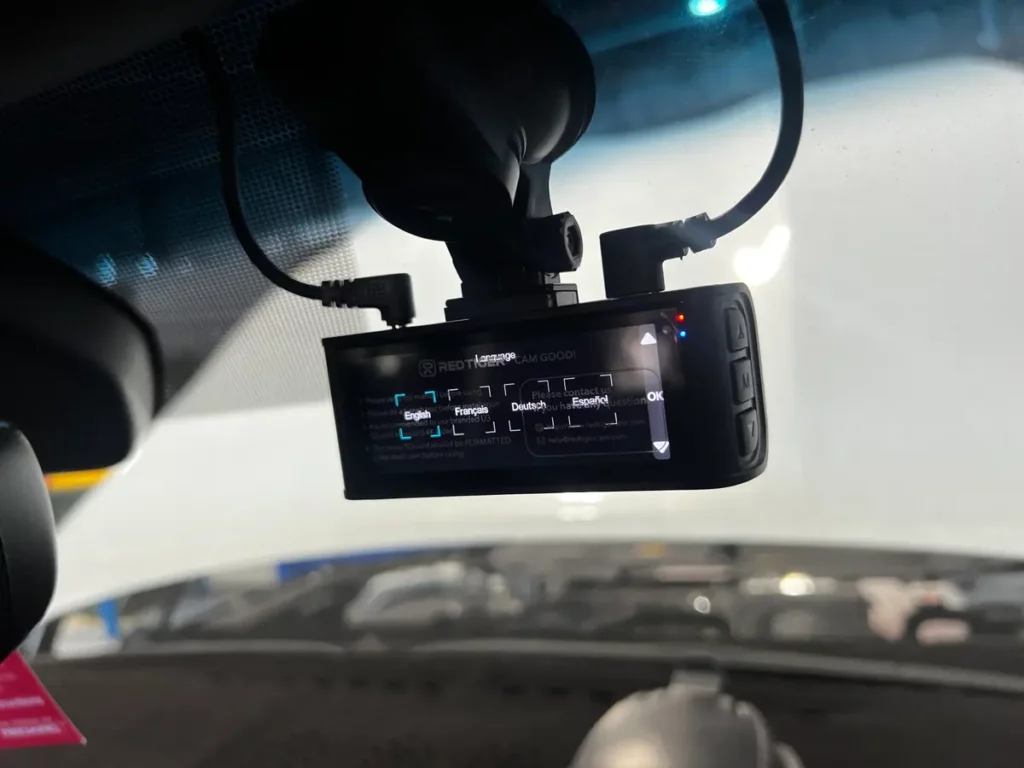Professional dash cam installation costs $199 and covers proper circuit identification, correct routing, appropriate fusing, and warranty protection.
DIY installation risks battery replacement ($250), potential ECU damage ($2,600+), safety hazards, and voided warranties.
The math becomes clear when you factor in the real risks.
Your dash cam investment deserves protection. Your vehicle’s electrical system deserves respect. Your safety deserves proper installation.
Sometimes the most expensive option is the one that looks cheapest upfront.
Why Use a Professional Dash Cam Installer?
Most people think $199 for dash cam installation sounds expensive.
Until their battery dies three weeks later. Or their engine management light comes on. Or worse, they discover their DIY cable routing has created a safety hazard that could turn deadly in a crash.
We’ve been installing automotive electrical systems for years, and the pattern is always the same. People spend $500+ on a quality dash cam, then balk at professional installation costs.
Here’s what that thinking actually costs you.
Preventing Battery Drain Issues
Your dash cam seems innocent enough. Just a small camera recording your drives.
But most dash cams draw between 0.25 to 0.45 amps in parking mode. Your vehicle’s electrical system is designed for a maximum 25 milliamp draw when parked.
That’s 10 times the recommended load.
The problem doesn’t show up immediately. Your car starts fine for the first few weeks. Then one morning, nothing.
The slow battery drain has been happening overnight, every night. Your alternator can’t keep up during short trips. The battery gets drawn down below its recommended discharge level repeatedly.
Battery replacement in Australia averages $250. But that’s just the start.
Premature battery failure from consistent deep discharge cycles means you’re replacing batteries more often. The real cost compounds over time.
Avoiding Simple Mistakes
Modern vehicles aren’t like the cars your dad worked on. They have 50 to 60 different control modules, all connected through precise voltage-sensitive circuits.
Hook your dash cam into the wrong circuit, and you risk blowing a MOSFET in your BCM or ECM.
We’ve seen customers connect to what looks like a 12-volt feed, not realizing that voltage is controlled by a computer. Add an additional load to that circuit, and you can fry components on the circuit board.
When that happens, you’re looking at $2,600+ just to diagnose and replace the failed ECU or BCM.
The engine light comes on instantly. Sometimes you get a crank-no-start condition. Sometimes just persistent warning lights.
Either way, your $199 savings just became a $2,600 repair bill.
Avoiding Safety Risks
Dash cam cables need to run from your windscreen down through the headlining. In most vehicles, that path goes directly past curtain airbags.
Route the cable incorrectly, and you’ve created a potentially lethal hazard.
During airbag deployment, that cable can become a “lacerating whip.” The explosive force of airbag inflation can turn your installation cable into a projectile aimed at vehicle occupants.
Airbags save over 50,000 lives every 30 years. Compromising their function for a DIY installation isn’t worth the risk.
The probability is low, but the potential consequences are severe.
Access to Manufacturer Wiring Diagrams
Professional installation isn’t just about labor time. We invest $6,000-$8,000 annually just in vehicle schematic access.
Every vehicle is different. Every model year has variations. We need manufacturer wiring diagrams to identify safe connection points that won’t damage computer-controlled circuits.
We use electronic test lights and quality multimeters designed for modern vehicles. Cheap test lights from auto parts stores can actually damage circuits during testing.
Even our tooling is specialized. An incandescent test light can put high impedance loads across voltage-sensitive circuits, potentially shorting MOSFETs just from testing.
That infrastructure investment gets spread across every installation we do.
When DIY Actually Makes Sense
We’re not against DIY installation in every situation. Some scenarios make perfect sense for self-installation.
If your vehicle has USB sockets near the rearview mirror, go for it. Modern manufacturers are recognizing dash cam demand and providing proper power sources.
Vehicles over 20 years old are generally safe for DIY work. Older electrical systems have fewer computer-controlled circuits and more tolerance for additional loads.
But modern vehicles without dedicated dash cam power sources? That’s where professional installation becomes essential.
The Partnership You’re Actually Buying
Professional installation isn’t a one-time transaction. We’re building a long-term relationship.
When you upgrade vehicles, we’ll remove and reinstall your camera. Having issues with settings? Come back anytime.
Camera manufacturers provide excellent warranties, but only if installation was done correctly. Professional installation protects that warranty coverage.
Most customers spend over $500 on their camera, then look for the cheapest installation. We’d recommend the opposite approach.
Find quality dash cam installation first. The camera is replaceable. Electrical damage to your vehicle isn’t.

